Tracks is based on David Allen’s Getting Things Done, which rests on the principle that a person needs to move tasks out of the mind by recording them externally. This method frees the mind from the job of remembering everything that needs to be done, and allows it to concentrate on actually performing those tasks.
Installation and Configuration
Tracks runs on a Ruby on Rails open source framework to make it all work. http://www.bitnami.org offers a preconfigured package of Ruby on Rails and Tracks, that can be download and installed easily.
Using the Bitnami “stack” or preconfigured installation makes it easy to be able to take advantage of a great piece of software that would usually require more technical skill. And since both the software and the stack are open source (some software in this category can run as high as $500.00 USD per license) it is also a wonderful deal as they are free for personal use. This makes it accessible to students, small business owners, and anyone else who wants to get organized and become more productive.
Start-Up and First Use
The interface pops up revealing a welcome clean and uncluttered workspace. There is a date section, as well as a heading row to help get information and tasks organized. The thing I like most about Tracks is its ability to be flexible with naming conventions and entering information.
Unlike other software that has prenamed and preconfigured labels, Tracks allows the user to create their own names for contexts they are familiar with. This includes categories such as “calls,” “files,” “meetings,” “research,” and “goals;” to very specific items like “trip” or “someday.” This makes actions easy to categorize—when I am at a particular function like “calls,” I can easily see who I have to call no matter what project it belongs to.
Another benefit of this arrangement is the contexts I create are not limited to work, like my honey-do list, or garage cleaning project, but it can even incorporate my long-term goals. Since the software and methodology do not differentiate between my professional and personal life, I can integrate both parts of my life into the program.
Features and Tabs
To offer some perspective, a Home tab gives a summary of all the other pages of information. From here I can easily view things such as tasks that are due this week, completed tasks and actions for last week, a notes section and a status tool for particular items.
Then we come to a projects tab, and as before, the user is granted the flexibility to name these items and combine categories from both professional and personal life. Mine currently has 11 projects and is growing everyday as I learn to use the software in new ways.
The Tickler tab is for those actions and tasks that I cannot do personally, but have to delegate to someone else, or items that cannot be begun until some other piece is completed by someone else. This ensures that I do not forget something without having to look at it all the time. I can make sure that I review it every so often so I can follow up with the person responsible for the item I am waiting on, and reserve more of my focus on tasks that I need to get done.
The Done tab is self-explanatory. It keeps track of those actions/tasks I have completed and when I completed them in case I need to refer back to them. This is an invaluable tool, as anyone who has used Outlook and has erased old records to make room for new tasks can tell you.
I like the Notes tab, simply because I can do several things with it. I can write notes that are related to either actions/tasks within a project, or create notes that are not related to tasks, but are within projects. Things like summarizing a phone call, copying and pasting information from another application or web page for later use, or connecting it to several actions/tasks in more than one project. This makes the concept of entering information in one place critical.
I remember entering information in my planner, then in my computerized calendar, and finally on my Google calendar to make sure I had it available whenever I might need it. However, when times got changed I not only had to make the change in one place, but in every application I had previously entered it, or else risk missing a meeting or deadline.
The Preferences tab allows users to make custom changes to various ways information is displayed in the software. This can be nice when you are used to certain date formats or time displays.
Other features include an export option which offers several ways to access information and transport it into other formats, as well as an Admin tab, where you can manage users, adding or deleting them, find their password and other functions.
Summary
The ability to name things in a way that is familiar to me is perhaps the most attractive aspect Tracts. I can find things in the way that I think, and not be confined to a rigid template of container names. This feature allows the software to adapt to my personality, and not the other way around. I found Tracks easy to install, configure and use, but users can also access http://www.getontracks.org/ for forums and ideas on how to expand your knowledge of the software.
Tracks is easy to use and very effective at helping get projects and tasks organized and out of mind, making it easier to think more about getting things done and less time trying to figure out what to get done. The interface is simple and allows for exporting information for use in other software. One could even install it on a server and have it accessible via the web. This would allow accounts for employees, or perhaps a project account for students working together on a group assignment.
[etDetailsBox Score Card]
Effectiveness: A+
Interface: A
Usability: A
Installation: B
Overall: A-[/etDetailsBox]
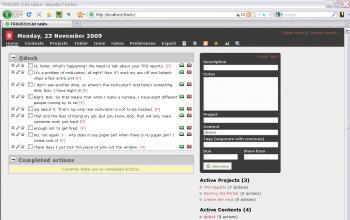
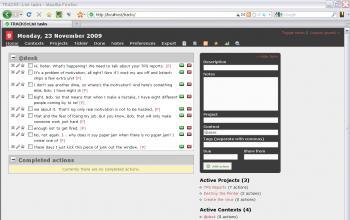
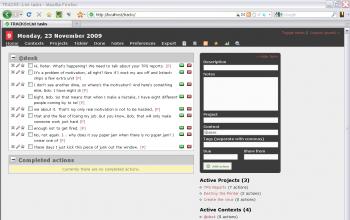
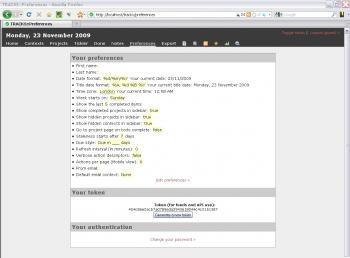
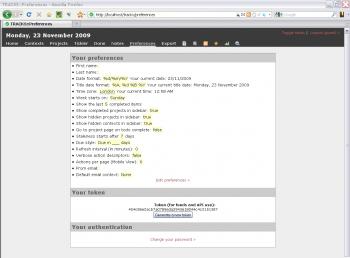
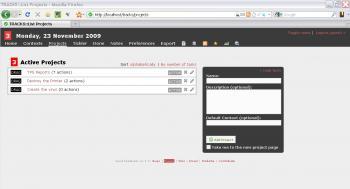





Friends Read Free